Exploring the Significance of Small Insects
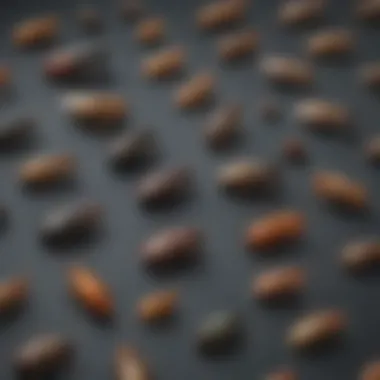

Intro
Small insects are often viewed as inconsequential players in the vast theater of ecology. Yet, their impact on ecosystems, human activities, and cultural perspectives is profound. This examination aims to foster a richer understanding of these organisms, highlighting their ecological functions, biological diversity, and cultural significance.
Insects, comprising more than half of all known species on Earth, exist in varied forms, sizes, and habitats. Their small size belies their essential roles ranging from pollination to decomposition. Many people overlook their contributions, leading to misconceptions about their importance. This piece seeks to unravel these concepts while appealing to students, researchers, educators, and professionals in various fields.
The following sections will meticulously explore key themes: the sophisticated classification of small insect species, their ecological roles, and their remarkable response to environmental changes. Furthermore, we will delve into cultural narratives, offering insightful perspectives on how communities perceive and interact with these small creatures.
In essence, this discussion will not merely convey facts about small insects. It will also provoke thought and challenge existing biases. We aim to present a comprehensive narrative that encompasses both the scientific and the culturally relevant facets of the insect realm.
Understanding Small Insects
Understanding small insects is fundamental to grasping their ecological, biological, and cultural significance. These organisms, often dismissed or overlooked in broader discussions about wildlife, play vital roles in maintaining the balance of ecosystems. Their impact includes contributions to pollination, decomposition, and serving as food sources for various predators. By exploring the intricacies of small insects, we can appreciate not only their ecological roles but also the complexity of life that exists around us.
Definition and Characteristics
Small insects, as defined within the broader context of entomology, typically refer to those members of the class Insecta that are smaller in size. This includes various species that contribute significantly to biodiversity. Common characteristics include a segmented body, three pairs of legs, and wings in many species. The sheer diversity ranges from the minute thrips to larger yet still small ants, showcasing adaptative strategies that allow them to thrive in various environments.
Taxonomy and Classification
The classification of small insects is essential for understanding their relationships, ecology, and evolution. This organization not only aids scientific research but is crucial for conservation efforts and understanding ecological roles.
Phylum Arthropoda
The Phylum Arthropoda includes the largest group of animals on Earth, known for their exoskeletons, jointed appendages, and segmented bodies. This phylum encompasses insects, arachnids, and crustaceans. The key characteristic of Arthropoda is their chitinous exoskeleton, which provides both support and protection. This feature is beneficial as it helps in growth and adaptability to various environments.
Unique to Arthropoda is their diverse morphology, which offers advantages in terms of survival strategies and reproduction. However, the reliance on an external skeleton can limit growth, leading to specific biological adaptations such as molting.
Class Insecta
Within the phylum, the Class Insecta represents the most diverse group, with millions of species identified. The defining characteristic of insects includes their three-part body structure comprising the head, thorax, and abdomen. This structure allows for specialized functions, enhancing their adaptability. Insects play pivotal roles in various ecological functions, such as pollination and pest control.
The unique feature of insects is their ability to undergo metamorphosis, which can vary from simple to complex life cycles. This is advantageous as it allows species to occupy different ecological niches throughout their lives, albeit it also means they have distinct vulnerabilities in various life stages.
Subcategories of Small Insects
Several subcategories of small insects, such as aphids, thrips, and ants, possess distinct characteristics and roles in the ecosystem. These groupings facilitate focused research and conservation strategies. For instance, aphids are known to impact plant health significantly, while ants are crucial in soil aeration and seed dispersal.
The key differentiator among these subcategories often lies in their feeding habits, reproduction strategies, and ecological interactions. Many small insects demonstrate fascinating adaptations that enhance their survival in diverse environments, presenting both advantages, like resilience against predators, and disadvantages, such as susceptibility to environmental changes.
"Understanding these small but crucial elements of biodiversity is essential for forming conservation strategies that protect and preserve whole ecosystems."
In summary, the taxonomy and classification of small insects reveal a complex structure that underscores their importance. Exploring these aspects offers valuable insights for students, researchers, and educators interested in biodiversity, ecosystem balance, and conservation.
Diversity of Small Insects
Diversity among small insects is crucial to understanding ecological balance. The presence of various species indicates a healthy environment. Each species plays different roles in ecosystems, contributing to nutrient cycles, pollination, and serving as food for numerous birds and mammals. They exist in various habitats, from forests to urban areas, making them vital to many ecosystems.
Moreover, studying the diversity of small insects informs conservation strategies. The loss of specific species can signal broader environmental issues. Therefore, identifying and categorizing these insects can help in monitoring ecosystem health and implementing effective conservation measures.
Common Types of Small Insects
Aphids
Aphids, often seen on plants, are small sap-sucking insects. Their ability to reproduce quickly allows them to form large colonies that can impact plant health significantly. Agriculture is greatly affected by aphids, which can transmit plant viruses.
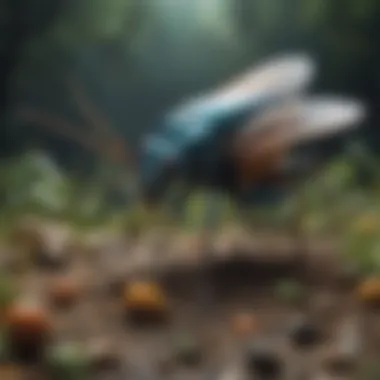

One key characteristic of aphids is their soft bodies, which make them vulnerable to predators but allow them to remain hidden amongst foliage. Their role in ecosystems includes being a food source for many small birds and insects. Despite their pest status in agriculture, they facilitate predator-prey dynamics in nature, showcasing their importance in pest management strategies.
Thrips
Thrips are tiny insects that can be harmful to plants. They feed on a variety of crops, causing cosmetic damage and reducing yield. Their elongated bodies and fringed wings make them distinct among other insects. Thrips are important not only as pests but also in pollination processes within plants.
A unique feature of thrips is their ability to reproduce both sexually and asexually, which allows them to quickly colonize an area. This adaptability, however, poses challenges in agricultural contexts, as controlling their populations often requires integrated pest management strategies.
Ants
Ants represent one of the most diverse groups of small insects. Their social behavior and complex colonies have fascinated scientists for years. They play essential roles in ecosystems, such as aerating soil and dispersing seeds, which promotes plant growth.
A defining characteristic of ants is their sophisticated communication methods, using pheromones to coordinate actions within colonies. This social structure is advantageous for survival, as they work collectively to build nests and locate food. However, when they invade homes or agricultural areas, they can become pests, necessitating management strategies to mitigate their impact on human endeavors.
Rare and Endangered Small Insects
Habitat Loss Impact
Habitat loss has devastating effects on many insect species. This occurs due to urban development, deforestation, and pollution. A key characteristic of habitat loss is its direct correlation to declines in insect population and diversity, leading to reduced ecosystem functionality. While many insects adapt to changing environments, rare species often cannot, resulting in extinction and loss of biodiversity.
The impact of habitat loss is significant, as it disrupts the linkage of species within ecosystems. Without these small insects, ecosystem functions like pollination and nutrient cycling can be compromised. Furthermore, once an insect species becomes endangered, the ramifications can extend beyond its existence, impacting food webs and habitat integrity.
Conservation Status
The conservation status of small insects is often precarious. Many species are classified as endangered or threatened due to various anthropogenic factors like habitat destruction and climate change. A critical aspect of conservation status is the recognition of the importance of these species, which often goes overlooked.
Conservation efforts are essential in maintaining biodiversity and ecosystem health. Effective programs can include habitat restoration, sustainable agricultural practices, and public awareness campaigns. Unfortunately, the lack of funding and research limits these efforts, hindering the chances for many small insects to survive in a rapidly changing world.
"Understanding the diversity of small insects not only highlights their ecological roles but also emphasizes the necessity of conservation efforts to prevent further loss of species."
Ecological Roles of Small Insects
Small insects play essential roles in maintaining the balance of ecosystems. Their contributions are often understated, yet they are pivotal in various ecological processes. Understanding these roles helps us appreciate their significance and the impact they have on our environment.
Pollinators in Ecosystems
Small insects, particularly bees, butterflies, and certain beetles, function as crucial pollinators. The act of pollination is vital for the reproduction of many flowering plants. In fact, around 75% of the world’s crops depend on animal pollination. This ecological service is imperative not only for biodiversity but also for global food security.
Insects transfer pollen from one flower to another, facilitating fertilization. As a result, they contribute to the production of fruits, seeds, and nuts, which serve as food sources for a vast array of animals, including humans. Beekeeping is one example of how humans harness the power of pollinators for agricultural productivity.
Decomposers and Nutrient Cycling
Small insects, such as ants, termites, and certain beetles, also play a key role as decomposers. They break down organic matter, such as dead plants and animals, returning essential nutrients to the soil. This process is essential for nutrient cycling, which sustains the growth of new plants.
When small insects decompose organic materials, they aid in the regeneration of ecosystems. Microbial activity is boosted, promoting soil health. Insects contribute to carbon cycling, helping to mitigate climate change effects by sequestering carbon in soil. Without these decomposers, ecosystems would struggle to maintain structure and function.
Food Source for Other Animals
Small insects serve as an important food source for many animals. Birds, small mammals, amphibians, and reptiles rely on them as a primary part of their diets. The abundance and diversity of these insect populations are critical to the survival of these species. An ecological imbalance can occur if there is a decline in small insect populations, leading to a ripple effect throughout food webs.
For example, many birds feed on insects during breeding seasons to provide necessary proteins for their young. This interdependence highlights how small insects support broader ecological networks. Failure to recognize this important relationship may jeopardize diverse species within ecosystems.
Overall, recognizing the ecological roles small insects play allows us to understand their importance comprehensively. Future efforts in conservation and research can build on this foundation to ensure the protection of these invaluable creatures.
Biological Significance of Small Insects
Small insects play a crucial role in various biological systems. Their significance extends beyond their size, influencing ecosystems, agriculture, and even human health. Understanding their biological features helps appreciate their role in ecological balance and cultural contexts.
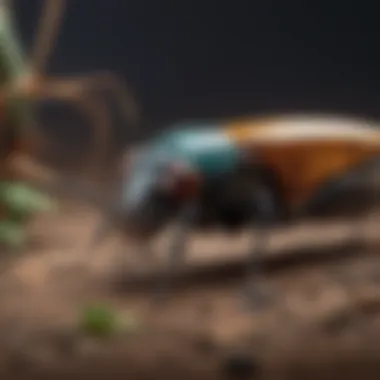
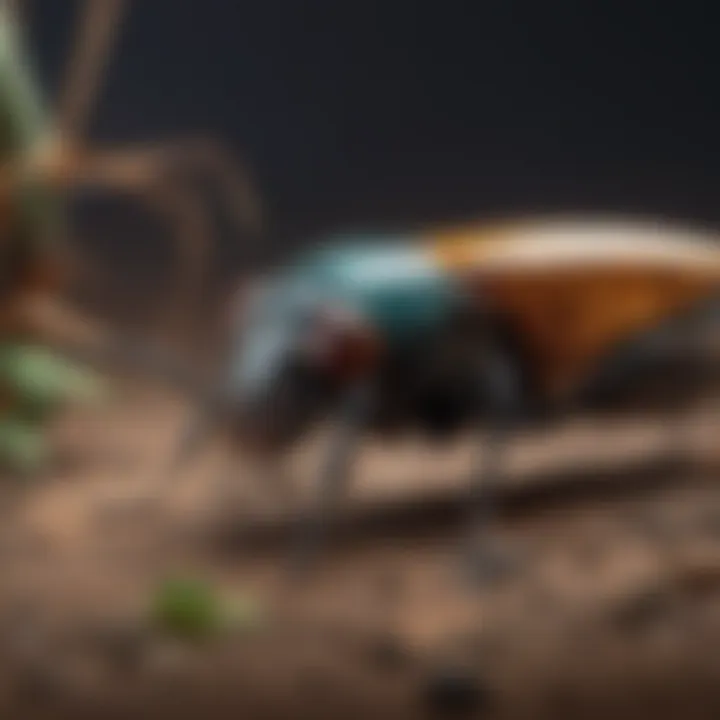
Life Cycle and Behavior
Reproductive Strategies
Reproductive strategies in small insects vary widely. Many species reproduce rapidly, enabling population increase. For instance, aphids can give birth to live young without mating, a process called parthenogenesis. This strategy allows them to exploit resources quickly. Conversely, some insects like the Monarch butterfly engage in complex mating rituals and long migrations to find suitable nesting.
Such strategies provide distinct advantages, including adaptability to environmental changes. However, unique features like high reproductive rates can lead to pest outbreaks, causing challenges in agriculture.
Adaptations to Environment
Adaptations to environment in small insects showcase their resilience. Many have developed specific traits such as camouflaging abilities to avoid predators. For example, leafcutter ants have evolved social behaviors to work collectively, enhancing their survival.
These adaptations not only contribute to their survival but also symbolize the interconnectedness of life in ecosystems. However, specialized adaptations make some species vulnerable to rapid environmental changes, like climate shifts.
Physiological Features
Respiration
Respiration in small insects occurs through a network of spiracles and tracheae, allowing efficient gas exchange. Unlike mammals, they do not rely on lungs. This characteristic enables them to thrive in various habitats, even in low-oxygen environments.
Such a method is beneficial because it supports their small size and high metabolic rates. However, it limits their size potential, as larger insects struggle to get sufficient oxygen.
Excretion
Excretion processes in small insects involve specialized structures called Malpighian tubules. These organs efficiently eliminate waste while conserving water. This adaptation is critical for survival in arid environments.
The unique feature of excretion systems maintains internal balance, allowing insects to thrive in diverse climates. Yet, these systems can be less effective in polluted environments, leading to health issues for the insects.
Nervous System
The nervous system of small insects consists of a decentralized network, with a ventral nerve cord and ganglia. This provides them swift responses to stimuli, essential for survival.
The key characteristic of their nervous system is its simplicity, allowing quick reflex actions. However, this simplicity may limit their cognitive capabilities compared to larger animals.
Understanding the biological significance of small insects illustrates their vital roles in ecosystems and human interactions. Their resilience, adaptation, and complex life cycles offer insights into ecological dynamics.
Overall, the study of small insects reveals crucial links between biology and environmental health.
Interactions Between Small Insects and Humans
The relationship between small insects and humans is multifaceted and significant. Small insects play critical roles in various areas, notably in agriculture and culture. Understanding these interactions helps in making informed decisions about insect management and conservation efforts.
Pest Insects and Agriculture
Impact on Crops
Pest insects are one of the most visible impacts small insects have on agriculture. They can cause severe damage to crops, leading to financial losses for farmers and affecting food supply. The most significant characteristic of pest insects is their ability to reproduce rapidly, which allows them to infest crops quickly. Their presence can disrupt ecosystems, which complicates pest control strategies. It is crucial to understand this aspect as it can encourage sustainable agricultural practices. Crop damage can vary by species of insect, which underscores the importance of targeted pest management techniques.
Integrated Pest Management
Integrated Pest Management (IPM) is a holistic approach to managing pest populations. The main idea is using various strategies to minimize crop damage while reducing reliance on chemical pesticides. IPM combines biological control, habitat manipulation, and resistant crop varieties, making it a beneficial choice for modern farming. A unique feature of IPM is its emphasis on long-term prevention, rather than simply eradicating pests. This helps maintain ecological balance but requires knowledge and skill from farmers, which could be a challenge.
Cultural Perspectives on Insects
Insect Symbolism in Different Cultures
Insects carry deep symbolic meanings across cultures. For instance, many societies view bees as symbols of hard work and cooperation, whereas others may associate specific insects with death or transformation. This key characteristic of insects as symbols offers insight into human behavior and values. Examining these cultural perspectives aids in understanding how attitudes towards insects can differ significantly. Their symbolism can impact everything from art to literature or even everyday conversation but may also lead to misunderstandings about the ecological roles small insects fulfill.
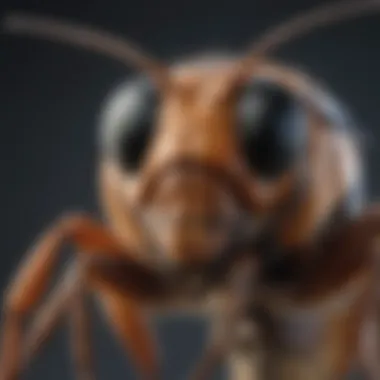
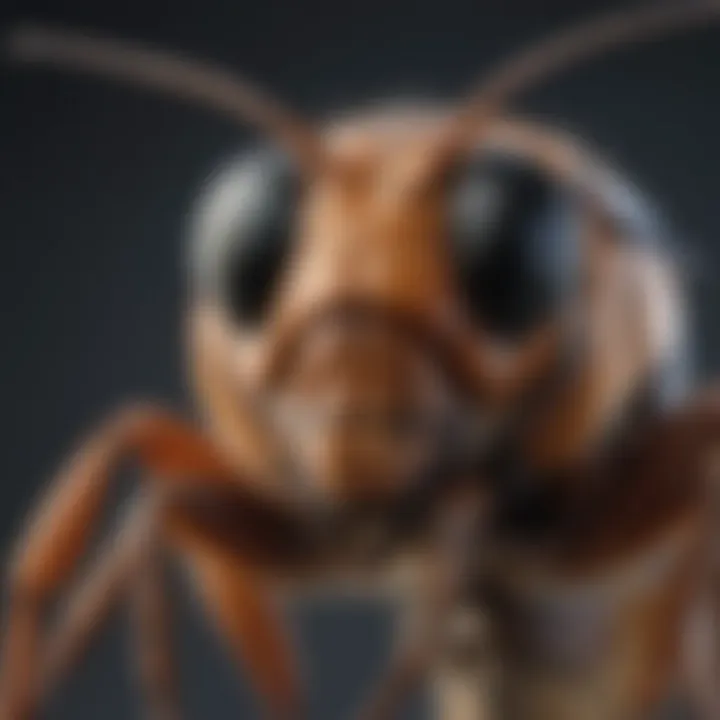
Edible Insects and Nutrition
Edible insects are gaining attention as a sustainable source of nutrition. They provide essential proteins, vitamins, and minerals that can help address food security. The key characteristic of edible insects is their lower ecological footprint compared to traditional livestock. Utilizing insects for food can lessen the strain on agricultural resources. However, public perception and cultural acceptance remain barriers to widespread adoption, createing unique challenges in promoting insects as food alternatives. This duality makes edible insects a relevant topic in the conversation about sustainable practices, particularly as global demands for food sources grow.
Challenges and Future of Small Insects
The challenges facing small insects today are crucial to understand. These challenges indicate the current health of ecosystems. Small insects face numerous threats that require immediate attention. The future of these organisms will largely depend on how these threats are addressed. Understanding these challenges helps frame the importance of small insects in ecological dynamics and biodiversity.
Climate Change Effects
Climate change poses serious threats to small insects. Various changes in temperature and weather patterns directly impact their habitats. Understanding this impact is necessary for future conservation efforts.
Habitat Alteration
Habitat alteration is a significant aspect of climate change. Changes in weather patterns result in habitat loss for many small insect species. This alteration can lead to disrupted food chains, as insects often serve as prey for other animals.
One key characteristic of habitat alteration is the creation of unsuitable environments for small insects. For example, increased temperatures can dry out wetlands where many insects thrive.
This change presents both challenges and opportunities for the study of these insects. A beneficial aspect of studying habitat alteration is its ability to inform conservation practices. By using data, researchers can create targeted efforts to preserve critical habitats. However, there are disadvantages to consider. Often, immediate human needs conflict with conservation efforts. Balancing these demands is necessary but complicated.
Impact on Species Distribution
Impact on species distribution is another critical component influenced by climate change. Changes in climate lead to shifts in where small insects can survive. Some species may migrate to more suitable areas, while others may face extinction.
A notable characteristic of this distribution impact is the potential for increased competition. As species shift, different insects may compete for the same food sources. This change can lead to reduced populations of certain species.
The unique feature of studying species distribution changes is its theoretical frameworks. These frameworks help predict which species are at risk. This prediction can guide conservation efforts effectively. However, the disadvantage here lies in the uncertainty of data. Predicting population shifts involves significant uncertainty due to varying local conditions.
Conservation Efforts
A comprehensive understanding of conservation efforts is vital for the future of small insects. Research initiatives play a key role in these efforts. They provide data on species populations and their ecological roles. This information can inform policy makers for better decisions.
Research Initiatives
Research initiatives focus on studying small insect populations and their behaviors. This specific aspect offers insight into how these insects interact with their environments. The aim is to gather data that can guide conservation efforts effectively.
One key characteristic of research initiatives is their collaborative nature. Ecologists, entomologists, and government agencies often work together. Their combined efforts result in richer data. This collaboration proves beneficial in mobilizing resources towards conservation. However, funding limitations can be a significant challenge. Research projects often compete for limited funding resources.
Policy and Regulation
Policy and regulation form the backbone of conservation efforts aimed at small insects. Effective policies are crucial to ensure habitat protection. This can include regulations on land use and pesticide application.
A notable characteristic of this aspect is its potential for long-term impact. Well-crafted policies can safeguard habitats for generations. This protection is essential for maintaining biodiversity. Additionally, effective outreach and education campaigns can raise public awareness about small insects' significance. However, the challenge remains in the formulation and enforcement of these policies. Political considerations can sometimes undermine ecological needs.
Understanding the challenges faced by small insects can inform future actions to safeguard their populations and habitats.
Ending
The conclusion of this article emphasizes the critical importance of small insects in ecology, biology, and culture. Understanding their roles leads to increased awareness about the balance of ecosystems. Small insects contribute not just to biodiversity but also maintain the health of ecosystems. Their functions as pollinators, decomposers, and as a food source underscores the intricate web of relationships within nature.
Recapitulating Importance
Recapitulating importance is crucial for a few reasons. First, it drives home how interconnected our actions are with the health of ecosystems. When we consider how pest insects impact agriculture, we see direct ramifications on human food sources and economies. Secondly, comprehending the ecological roles of small insects can inform conservation efforts. For instance, pollinators like bees or moths can signal the health of local environments. Their decline, often attributed to climate change and habitat loss, warns us of broader environmental issues impacting all forms of life.
Understanding small insects also sheds light on their biological mechanisms and cultural significance. Delving into how insects communicate or reproduce enriches our grasp of life forms beyond our own kind. Moreover, various cultures view insects symbolically, offering insight into human perspectives on nature. Such a holistic appreciation elevates our responsibilities towards conservation and sustainable practices.
Call for Further Research
There is a pressing need for further research on small insects, especially in the face of accelerating environmental changes. Studies focusing on climate change effects on insect populations can provide vital data for conservation strategies. Additionally, ongoing exploration into rare and endangered species can reveal unforeseen interactions that may exist in ecosystems.
Promoting interdisciplinary research, combining entomology with fields like climate science and sociology, can yield richer insights. For example, understanding how urban development impacts insect biodiversity can lead to better urban planning.
It is vital for both academic and local communities to foster research initiatives. Educational programs can enhance public participation in insect conservation. Citizen science projects often yield valuable data while increasing community engagement.







